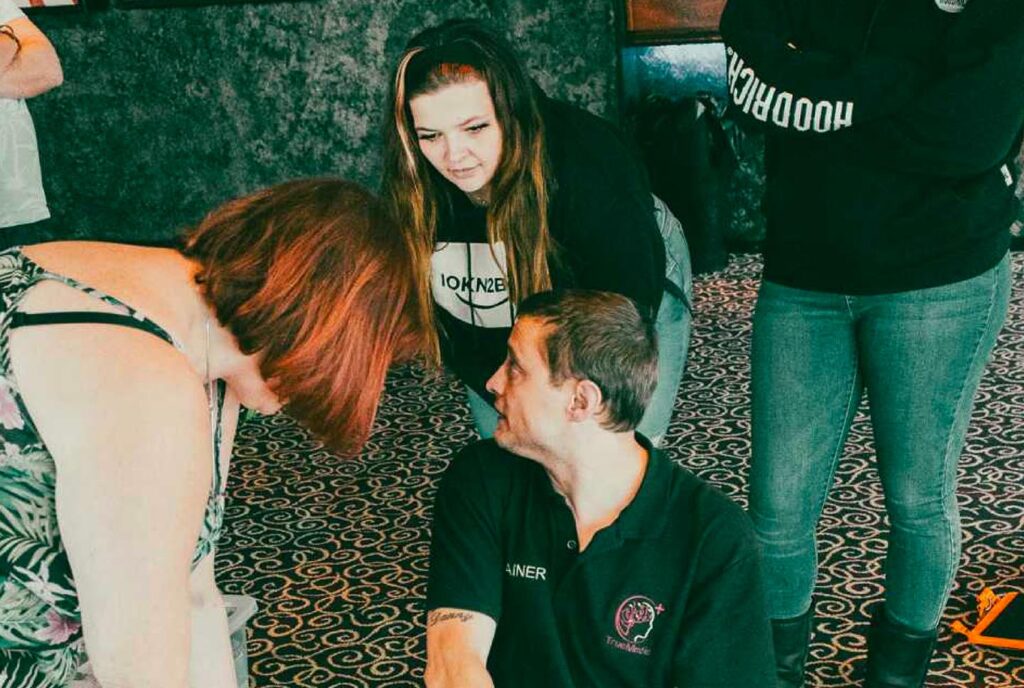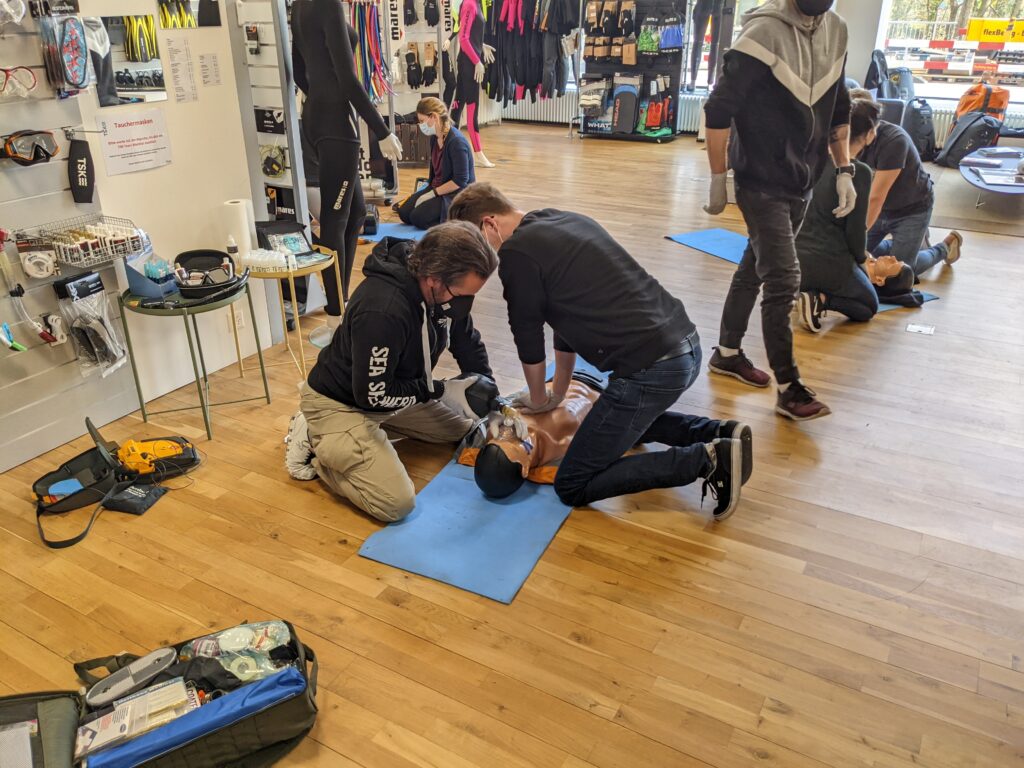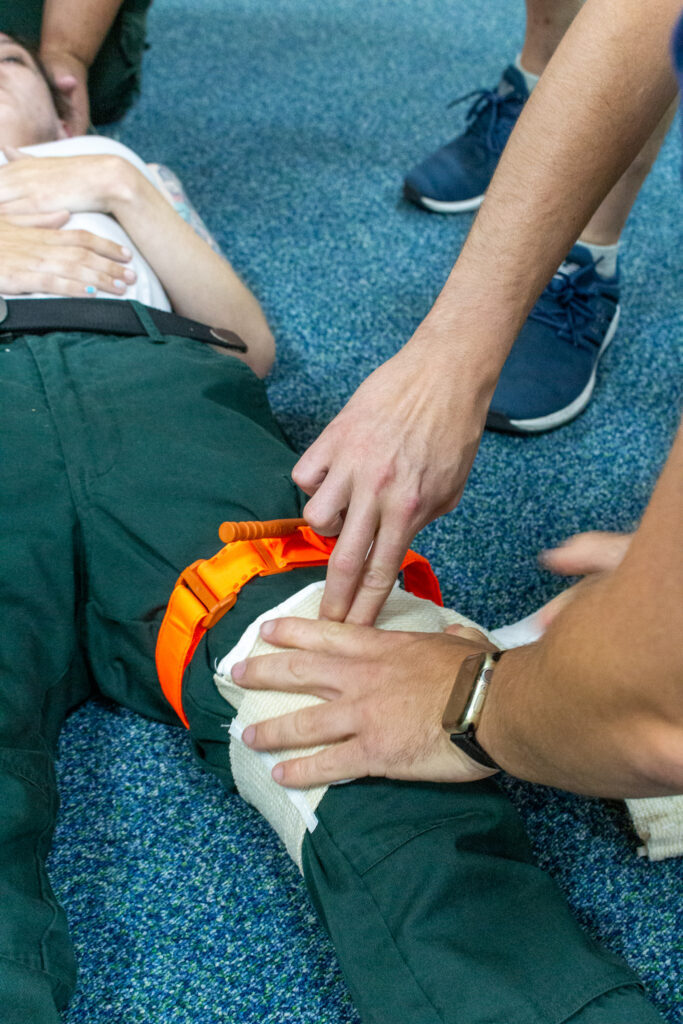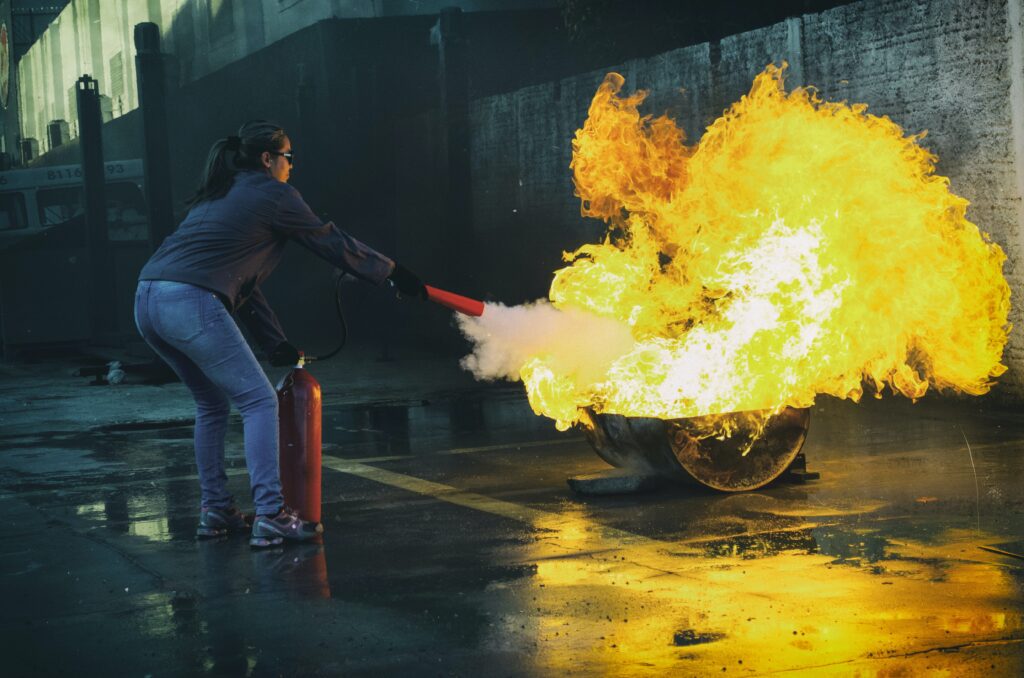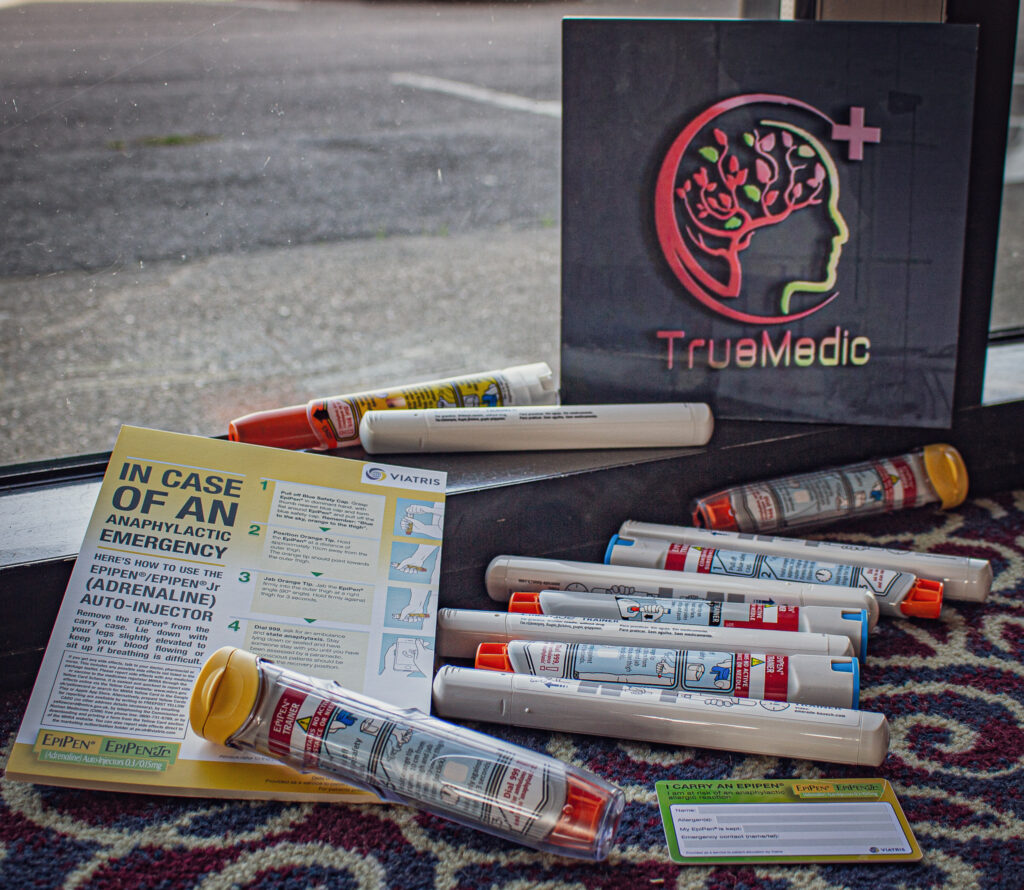Do you know most people don’t know how to correctly use an automated external defibrillator (AED)? This device is designed to help save lives in cases of cardiac arrest, and you must know how to use it correctly and safely. Using the wrong techniques sometimes costs precious lives, which can be avoided by simply having a little knowledge about the working of AED.
Anyone can use an AED in an emergency. You don’t need any medical background or certification to operate one. All you need is a little guidance and an understanding of how the device works and the safety measures required before using it. TrueMedic Ltd truly cares about its customers, and therefore, in this article, we will explain how you can use an AED most effectively and efficiently. So let’s get started.
What Is An A.E.D?
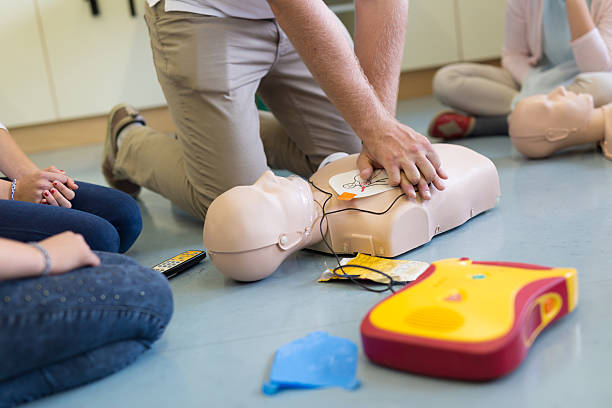
In the event of a sudden cardiac arrest, an AED (otherwise known as an automated external defibrillator) is there to help. This innovative electronic device can be easily transported and utilized during medical emergencies by analysing heart activity and delivering an electric shock through the chest, restoring normal rhythm to the patient’s heartbeat. [1]
AEDs have significantly improved the survival rate of people suffering from cardiac arrest by providing a reliable, user-friendly method for delivering life-saving shocks. An AED is often the only way to revive a cardiac arrest victim, so knowing how it works is essential.
TrueMedic Ltd truly understands the concern of the users, and that is why they provide the best first aid training and safe use of A.E.D.
How to Prepare for Using an A.E.D.?
Once you’ve located an AED, some steps should be taken before using it to maximize its effectiveness and ensure the safety of the patient: [2]
-
Check The Area
Ensure that the victim is in a safe place and that there are no metal objects on the patient’s body. If there are, remove them before using the AED.
-
Turn On The AED
The first step is to turn on the AED, which should automatically start speaking instructions on using it correctly. Ensure you follow all instructions carefully, which will help you use the AED correctly and quickly.
-
Examine The Patient
Once you’ve turned on the AED, take a moment to examine the patient for any signs of life, such as breathing or movement. If there are none, attach the electrodes (pads) from the AED to the patient’s chest as instructed.
-
Follow Instructions
The AED will then analyse the patient’s heart rhythm and, if necessary, will advise you to deliver a shock to the patient. Follow all of the instructions carefully and press the button when prompted to do so.
How To Use an A.E.D Safely? | Step By Step Guide

Time is of the essence when a person suffers from sudden cardiac arrest, as an Automated External Defibrillator (AED) must be applied quickly to improve their odds of survival. Research has determined that within one minute of experiencing SCA, there is a 90% chance for recovery; every additional minute decreases this probability by 10%. That’s why AEDs must be accessible everywhere. [3]
With the simple click of a button, you can become essential to saving someone’s life from sudden Cardiac Arrest. Follow these few steps to learn how:
Step 1:
Before you use an AED, the machine will prompt you to “remove pads from package in the back of the unit.” Defibtech AEDs simplify this process; all that’s needed is a turnaround. There will be a pack behind the device containing your rescue pads.
Open the package and take out the two pads. Ensuring these pads are directly applied to the patient’s chest is compulsory. If not, making the most of the AED machine won’t be possible.
Step 2:
The AED will audibly instruct you to “apply pads on the patient’s bare chest as illustrated.” There must be no clothing obstructions when placing the pads, as any material hindering them will render them ineffective. The necessary positioning of the AED pads is also depicted via visuals imprinted directly on each pad.
Upon opening the pads package, two illustrations demonstrate where to position it. For example, one picture depicts a pad placed on the right side of the patient’s chest beneath the collarbone.
At the same time, another diagram illustrates a pad positioned near the left armpit area. As shown in both images on the package, remember to firmly press each pad onto its respective location for optimal results.
Step 3:
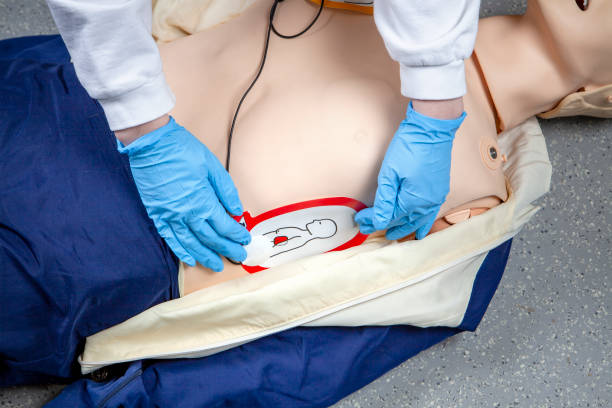
Once the pads are set up correctly, the machine will alert you with an “analysing heart rhythm” warning. It is paramount that no one touches the patient during this time, not even a finger. Scan up and down their body to ensure there’s nobody near them before loudly asserting: “STAND CLEAR.
If the machine implies a shock is required, it will announce “Shock Advised. Charging. Stand Clear.” Then your attention should be directed to all areas of the body in question, and you must loudly declare “Stand clear” for everyone’s safety. Sometimes, you will be signalled with a “No Shock Advised,” meaning CPR is necessary.
Step 4:
Press the flashing blue button to authorize the action when the machine concludes its scan and suggests shock delivery. After that, follow all of the instructions given by your AED until professional help arrives. Remember, every second counts, and you can make a difference by staying calm and following the AED’s directions.
Step 5:
After delivering the first shock, a voice confirms, “Shock one delivered. It is safe to touch the patient. Begin CPR now.”
So your resuscitation can commence even though it may be tempting to remove the pads from their body after each shock.
Remember that this should never be done; keep them in place while you perform chest compressions at an ideal rhythm set by a metronome playing through the AED’s speakers. This procedure continues for two minutes before re-analysis with an assessment of any further shocks needed until medical assistance arrives.
Each instance is unique. If the AED is used promptly, a single shock could restore responsiveness and breathing in the person. In this case, no CPR needs to be administered; nonetheless, constant surveillance until emergency services arrive should still occur. Nevertheless, if cardiac arrest occurs again after revival from one shock treatment, start providing CPR instantly.
In more critical cases, CPR may need to be administered multiple times in addition to an Automated External Defibrillator (AED) shock and medication from Emergency Medical Services personnel for successful resuscitation.
Learning how to use an AED Course can be a life-saving skill. It gives you the confidence to help in times of critical need and provides peace of mind that you are prepared for an emergency. TrueMedic Ltd. offers a range of medic courses to ensure you are knowledgeable on the basics of AED usage and can confidently provide help in case of cardiac arrest. Contact us today to get started!
FAQs
1. How do you use AED effectively?
Learn the basics of AED usage and read the user’s manual before use. When ready, open the pads package and place them firmly onto the patient’s chest and armpit area, as depicted in the visuals on each pad. Press the flashing blue button to authorities if required by the machine. Follow all instructions given by your AED and provide CPR when needed.
2. What is the most important thing to remember when using an AED?
When operating an AED, it is critical to ascertain that the victim is unconscious, not breathing normally, and is pulseless. If all these conditions are verified in a case of cardiac arrest, switch on the device, analyse it, and follow its instructions via visual or audio prompts for further steps.
3. Do you use an AED if there is no pulse?
If the individual is unresponsive and displays no signs of respiration or a pulse, be ready to utilize the AED expeditiously.
4. When should AED not be used?
An AED is only suitable for victims who display a rapid heartbeat; it cannot be used on individuals whose pulse rate has dropped or whose heart no longer beats. An AED can identify if they require electrical stimulation to restore their normal rhythm by placing the pads or electrodes onto the victim’s chest.
References
[1]https://firstaidtrainingcooperative.co.uk/how-to-perform-cpr-and-use-a-defibrillator-aed/
[2]https://www.resus.org.uk/sites/default/files/2020-03/AED_Guide_2019-12-04.pdf
[3]https://www.seton.co.uk/aeds

